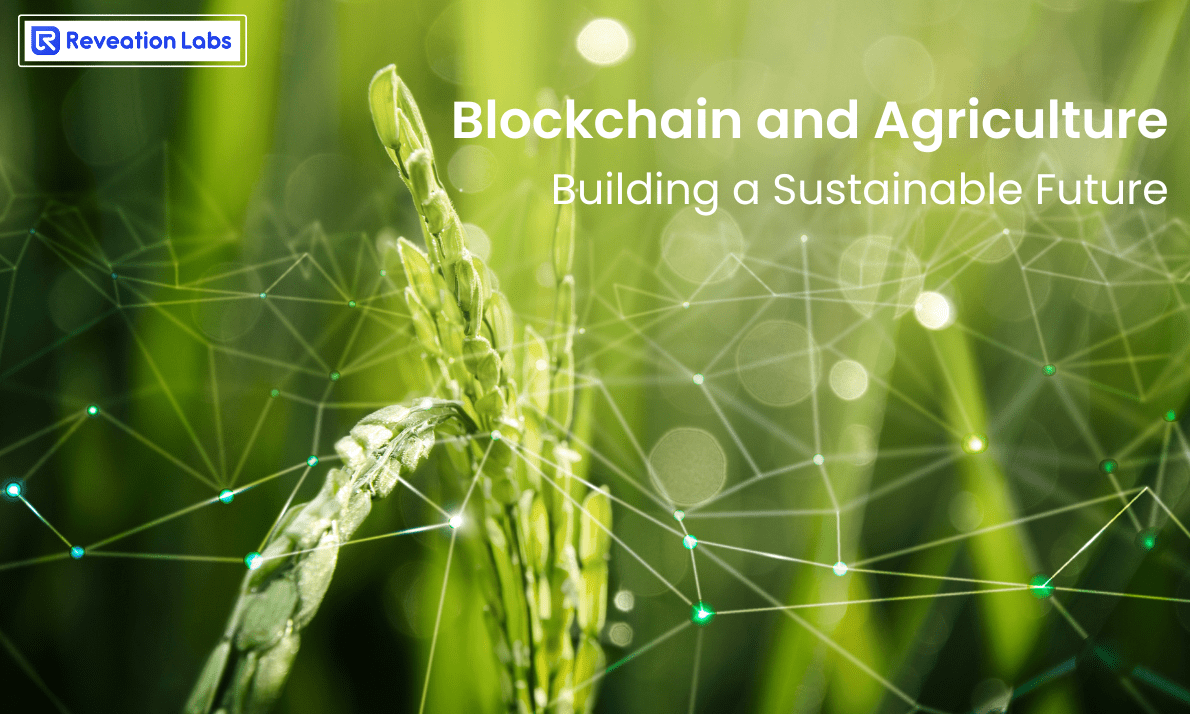Blockchain and Agriculture: Building a Sustainable Future

What Is Blockchain Agriculture?
Blockchain agriculture refers to using blockchain technology in the agriculture industry to create a more transparent and efficient supply chain. Blockchain is a digital ledger that enables secure and transparent record-keeping of transactions between different parties without the need for a central authority.
In the context of agriculture, blockchain technology can be used to track the movement of agricultural products from farm to table, ensuring that the products are authentic and have been produced in compliance with relevant regulations and standards. This helps to build trust among consumers and other stakeholders in the supply chain.
How Is Blockchain Used In Agriculture?
Blockchain is used in agriculture in various ways to enhance the food supply chain's efficiency, traceability, and transparency. Here are some examples of how blockchain is used in agriculture:
1. Traceability:
Blockchain technology can be used to track the movement of agricultural products from the farm to the end consumer, enabling stakeholders to trace the origin of the products and verify their authenticity. This can help to prevent food fraud and increase food safety by identifying the source of contamination.
2. Supply chain optimization:
Blockchain can optimize the supply chain in agriculture by improving logistics, reducing waste, and increasing productivity. By tracking products and inventory in real time, stakeholders in the supply chain can optimize their operations, reduce costs, and improve efficiency.
3. Smart contracts:
Blockchain technology can be used to create smart contracts that automate the exchange of goods and services in the agricultural supply chain. For example, farmers can receive payment immediately after delivering their products to the warehouse, reducing the risk of payment default and improving cash flow.
4. Payment systems:
Blockchain can also be used to facilitate payment systems in agriculture, particularly in areas with limited access to banking services. Blockchain-based payment systems can enable farmers to receive payments directly without the need for intermediaries, reducing transaction costs and increasing transparency.
5. Certification and standards:
Blockchain can be used to verify the certification and compliance of agricultural products with international standards, such as organic or fair trade certifications. This can help to increase trust and confidence in the products among consumers.
Uses Cases of Blockchain in Agriculture
1. Cropping and Food Production:
While boosting profitability in unfavorable environmental conditions, the agriculture sector faces numerous hurdles, including:
2. Food Supply Chain:
Food Supply Chain tracking is essential for determining the origin of food. It assures that the eatables provided are safe to consume.
However, because of the way the food supply chain is currently structured, it is difficult for food manufacturers and retailers to authenticate its origin.
With the advent of blockchain technology, it is now possible to instill confidence and transparency in the food supply chain ecosystem, assuring food safety for everybody.
3. Weather Crisis Management:
Farmers are frequently faced with uncertain weather conditions when cultivating various crops. Predicting and monitoring weather conditions is, therefore, critical to crop management.
Many crops planted in the United States cannot withstand flooding caused by heavy spring rains. When the oxygen concentration reaches zero, plants struggle to conduct life-sustaining functions such as water uptake, root growth, and respiration.
Furthermore, the current food chain ecosystems' lack of openness can result in ambiguous and expensive surge pricing. Consumers are unaware of when the crops were damaged by severe weather and what caused the price increases.
Farmers and other stakeholders will benefit from blockchain's capacity to provide traceability and transparency.
4. Agricultural Finance Management:
Among the several issues confronting formal financial inclusion and smallholders is a lack of transparency, credit histories, and difficulty in contract enforcement.
The inability to access financial services can have a negative influence on agricultural value chain performance, leading to the following:
Buyers struggle to secure an efficient supply of goods since producers are not maximizing their yields. It makes it harder for purchasers to pay farmers on delivery, causing poor smallholders to sell crops at reduced prices.
Smallholders can use financial services to:
Future of Blockchain In Agriculture
The future of blockchain in agriculture looks promising. Here are some potential developments that we may see in the coming years:
1. Increased adoption:
As the benefits of blockchain technology become more widely known, we may see an increase in its adoption in the agricultural sector. More farmers and agribusinesses may use blockchain to improve supply chain transparency, food safety, and sustainability.
2. Integration with other technologies:
Blockchain may be integrated with other technologies, such as IoT (Internet of Things) sensors, to create a more comprehensive agricultural ecosystem. For example, IoT sensors can collect data on soil moisture, temperature, and other factors, which can be stored and analyzed on the blockchain.
3. Decentralization:
Blockchain technology is inherently decentralized, which means that it can help reduce the power imbalance between farmers and agribusinesses. As more farmers use blockchain to create transparent and secure supply chains, they may be able to negotiate better prices and improve their bargaining power.
Conclusion
Blockchain technology has the potential to transform the agriculture sector in numerous ways. By providing a secure, transparent, and tamper-proof ledger of transactions, blockchain can help improve supply chain transparency, food safety, certification and compliance, payment and financing, and sustainable farming.
Comments
Post a Comment